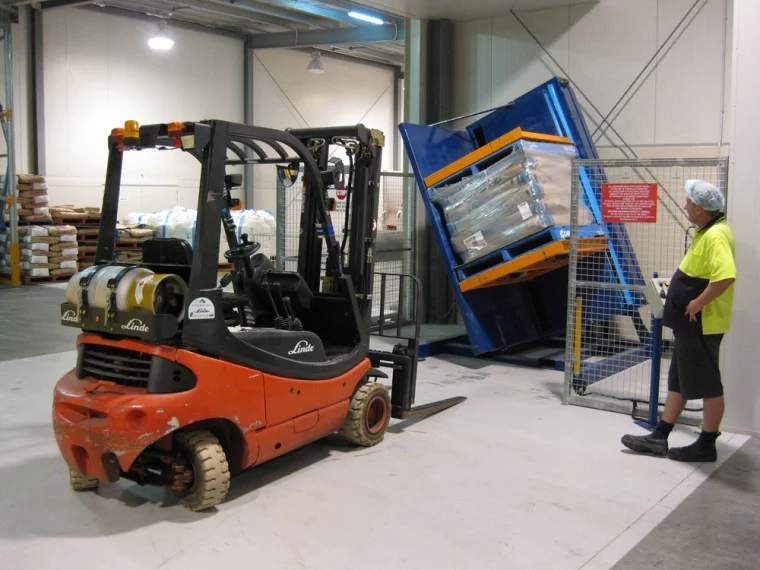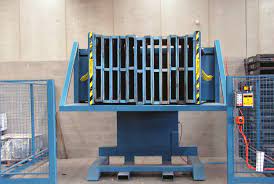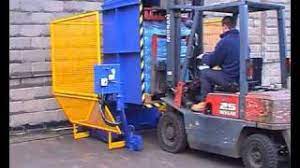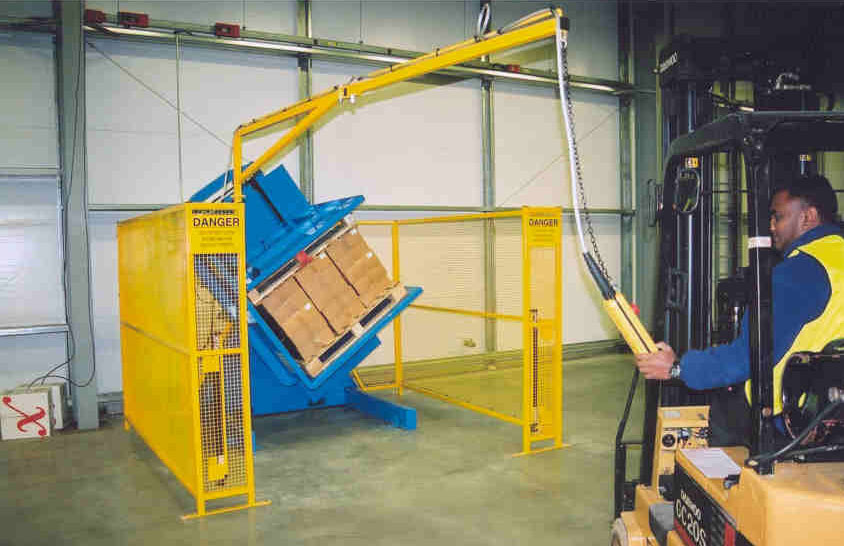Top Reasons Germany Industries Choose Pallet Inverters for Precision Automation in Lean Manufacturing Plants
Are you constantly battling operational bottlenecks in your plant? Many factory owners I speak with share a common frustration. They see their teams manually handling heavy loads, restacking goods from one pallet to another. This slow, labor-intensive process is not just inefficient; it's a hidden drain on your profits. Every minute spent on these non-value-added tasks increases your costs, raises the risk of product damage, and puts your workers in danger of injury. You're trying to build a lean, efficient operation, but these manual processes are holding you back, making it impossible to compete with the world's most productive plants. This is a problem that requires more than just telling people to work faster; it demands a smarter, automated solution.
The primary reasons German industries choose pallet inverters are for their ability to deliver precision automation, which is a cornerstone of lean manufacturing. These machines drastically increase operational efficiency, enhance worker safety by eliminating manual handling, significantly reduce product damage, and streamline logistical workflows. This integration creates a more resilient, cost-effective, and productive manufacturing environment, allowing German companies to maintain their competitive edge in a high-cost market.

I’ve spent my entire career in the packing machine industry, first as an engineer and now as the founder of SHJLPACK. I've seen firsthand how the right piece of equipment can transform an entire operation. It's not just about a single machine; it’s about a new way of thinking. German manufacturing is admired globally for its precision and efficiency, and their widespread adoption of pallet inverters is no accident. Let's dig deeper into the specific reasons why this technology is so vital and how it can help you achieve your own lean manufacturing goals.
How Do Pallet Inverters Directly Boost Efficiency in Lean Manufacturing?
Is your production line frequently slowed down by the simple task of changing pallets? It’s a common bottleneck. You have goods arriving on one type of pallet, but they need to be moved to another for internal storage or outbound shipping. This manual transfer process ties up your valuable workforce, creates delays that ripple through your entire schedule, and wastes time that could be spent on tasks that actually generate revenue. It's a classic example of waste in a lean system, and it's a problem that automation was born to solve. A pallet inverter offers a direct and powerful solution, turning this time-consuming chore into a swift, automated, and efficient part of your workflow.
Pallet inverters directly boost efficiency in lean manufacturing by automating the transfer of goods between pallets. This single action dramatically cuts down on cycle times, minimizes the number of material handling steps, and, most importantly, frees up your skilled labor to focus on more complex, value-added activities. It transforms a slow, manual bottleneck into a smooth, integrated, and rapid process.

The War on Waste: Eliminating Non-Value-Added Time
In any lean manufacturing philosophy, the primary enemy is "Muda," the Japanese term for waste. Any activity that consumes resources but does not create value for the customer is waste. Manually restacking a pallet is a textbook example of non-value-added work. A pallet inverter attacks this waste head-on. Consider the time difference. A manual swap can take two workers 10-15 minutes, depending on the load. A pallet inverter accomplishes the same task in about 60-90 seconds with a single operator. This isn't just a small improvement; it's a fundamental change in your operational capacity. Over a single shift, this time saving adds up to hours of productive time reclaimed. Hours that can be used to process more orders, perform quality checks, or conduct preventative maintenance.
| Metric | Manual Pallet Exchange | Automated Pallet Inverter |
|---|---|---|
| Time per Pallet | 10-15 minutes | 1-2 minutes |
| Labor Required | 2 Workers | 1 Operator |
| Consistency | Low (depends on worker fatigue) | High (repeatable every time) |
| Process Control | Low | High |
Streamlining Workflow and Material Flow
True efficiency isn't just about speed; it's about flow. Pallet inverters are not just standalone machines; they are bridges within your material flow. They can be seamlessly integrated into automated conveyor lines. Imagine a scenario: raw materials arrive on cheap, disposable wooden pallets. These pallets are often not suitable for a cleanroom environment or your internal automated guided vehicle (AGV) system. A pallet inverter, placed at the receiving dock, can quickly and cleanly transfer the goods onto hygienic plastic or metal in-house pallets. The goods then travel through your production process. At the shipping dock, another inverter can transfer the finished products onto the specific export pallets required by your customer. This creates a smooth, uninterrupted flow from receiving to shipping, eliminating manual intervention points that cause delays and errors. This level of integration is a hallmark of the highly efficient factories I've seen in Germany.
Why is Precision Automation with Pallet Inverters Crucial for Quality Control?
Have you ever walked through your warehouse and seen a pallet of damaged goods set aside? It's a painful sight for any business owner. That pallet represents not just lost product, but also wasted labor, wasted materials, and a potential delay for your customer. Manual handling of heavy or awkwardly shaped loads is a leading cause of this damage. A moment of inattention or fatigue can lead to a dropped box or a crushed container. This isn't just a minor issue; it's a direct hit to your bottom line and can damage your reputation for quality. The solution lies in removing the human variability and inconsistency from the process. Precision automation, specifically with a pallet inverter, provides a controlled, gentle, and repeatable method to handle your products, safeguarding their integrity every time.
Precision automation with pallet inverters is crucial for quality control because it replaces inconsistent, high-risk manual handling with a standardized, gentle, and computer-controlled process. This drastically reduces the risk of product damage during pallet exchange, load recovery, or layer separation, ensuring your goods remain in perfect condition from production to final delivery.

The Mechanics of Gentle and Controlled Handling
A pallet inverter’s design is centered around protecting the load. It doesn't just flip things over; it does so with engineered precision. The process begins when a forklift places the pallet into the machine. Two soft, durable clamping tables then move in to secure the load from the top and bottom. The key here is adjustable clamping pressure. This is a critical feature that I always emphasize with my clients. Whether you are handling robust bags of cement, delicate boxes of electronics, or fragile glass bottles, the machine's pressure can be calibrated perfectly. It applies just enough force to hold the load securely without crushing or marking the product. The rotation itself is smooth and controlled, not jerky or abrupt. This mechanical grace ensures that even unstable or sensitive loads are transferred without shifting or falling, preserving the original stacking pattern and the integrity of each individual item.
Consistency as a Pillar of Quality
Humans are not machines. A worker can perform a task perfectly a hundred times, but on the 101st time, fatigue, distraction, or a simple misjudgment can lead to an error. This variability is the enemy of quality control. A pallet inverter, on the other hand, performs its task with the exact same speed, pressure, and motion every single cycle. This repeatability is the foundation of a reliable quality assurance program. You can be confident that the first pallet of the day is handled with the same care and precision as the last pallet of the shift. This level of consistency is simply unattainable with manual labor. German industries, especially in sectors like automotive, pharmaceuticals, and food and beverage, cannot afford any deviation in quality. That’s why they rely on automated systems like pallet inverters to enforce their strict quality standards.
What is the Real ROI of Pallet Inverters in High-Cost Environments like Germany?
As a business owner, every investment must be justified. When you're operating in a high-cost environment like Germany, with high wages and strict regulations, the pressure to ensure a strong return on investment (ROI) is intense. You might look at the initial price of a pallet inverter and hesitate. It's a significant capital expenditure. However, failing to invest in this type of automation can be even more costly. Continuing with inefficient, manual processes means you are constantly falling behind competitors who have already embraced automation to lower their operational costs and increase their throughput. The key is to look beyond the sticker price and understand the full financial picture.
The real ROI of a pallet inverter in a high-cost environment is delivered rapidly through a powerful combination of savings. These include direct reductions in labor costs, the near-elimination of expenses from product damage, significant savings on pallet rental or replacement, and faster logistics cycles that increase overall plant throughput and efficiency.

Breaking Down the Financial Benefits
The payback period for a pallet inverter is often much shorter than you might think. Let's break it down into clear, quantifiable savings. I often walk my clients through this exact exercise to demonstrate the value. The business case is built on several key pillars of cost reduction and efficiency gains.
| Cost Savings & Revenue Gain Area | Annual Financial Impact Calculation |
|---|---|
| Direct Labor Savings | A task that required two workers can now be done by one forklift operator as part of their existing duties. This can easily save the cost of at least one full-time employee. |
| Reduced Product Damage | If your damage rate is 1% of turnover and the inverter reduces this by 80%, the savings are substantial and go directly to your profit margin. |
| Pallet Management Savings | If you pay rental fees for shipping pallets, you can now transfer goods to cheaper in-house pallets immediately, drastically cutting rental days and costs. |
| Increased Throughput | Faster pallet swapping means faster truck turnaround times at your docks. This allows you to ship more product per day with the same infrastructure, directly boosting revenue potential. |
| Injury Prevention Savings | The cost of a single serious back injury (medical bills, compensation, lost time, insurance premium hikes) can sometimes exceed the cost of the machine itself. |
The Strategic Value Beyond the Numbers
While the direct financial savings are compelling, the strategic value is equally important for a forward-thinking leader. In Germany, companies see this not just as a cost-cutting tool, but as a strategic investment. An automated facility is a more attractive partner for high-value clients. It signals that you are reliable, modern, and committed to quality and safety. It improves employee morale by removing a dangerous and disliked task, allowing you to redeploy your staff to more engaging roles. This also serves as a foundational step in a broader digitalization strategy. By automating key physical processes, you create a more stable and predictable production environment, which is a prerequisite for successfully implementing more advanced systems like Manufacturing Execution Systems (MES) and IoT analytics. The investment is in your long-term competitiveness.
My Insights
When I sit down with business leaders, whether they are in steel, chemicals, or food processing, we often talk about the same core challenges. It’s about managing rising costs, dealing with aging equipment, and finding ways to get more out of the assets you already have. I remember speaking with a client, Javier, who runs a large steel mill. His goals were clear: increase the effective uptime of his equipment to 95%, lower his energy and operational costs, and push forward with digital transformation.
He saw the connection immediately. A machine like a pallet inverter isn't just about swapping pallets. For his operation, which handles heavy bags of alloys and other materials, it’s a direct attack on inefficiency and risk. It's a tool for lean manufacturing. By automating a manual, time-consuming task, you reduce waste in multiple forms: wasted labor, wasted time, and product damaged from improper handling. This directly contributes to the goal of lowering overall operational costs.
More importantly, it’s a practical first step toward a smarter factory. You can't effectively deploy a sophisticated MES or data analytics platform on top of a chaotic, unpredictable manual process. By automating a physical task like pallet handling, you create stability and predictability in your material flow. You create a reliable foundation upon which you can build your digital strategy.
I founded SHJLPACK on the principle of sharing this kind of practical, experience-based knowledge. My journey from an engineer on the factory floor to building my own company taught me that the right equipment is more than just steel and motors; it's a strategic partner. It’s about finding a total solution that solves your immediate problems while paving the way for you to achieve your long-term ambitions. That's the real value we aim to deliver.
Conclusion
Ultimately, adopting pallet inverters is a strategic move for precision, safety, and profitability, making it a cornerstone of modern, lean manufacturing operations.




